Commodities have seen some massive price swings. NFP up in a few hours could see some excitement into the weekend close. Read below to find out more.
Dollar Index (DXY):
Was shocked with some of the moves we saw in FX as the US came back online Tuesday. DXY has taken out the covid highs and is now trading at levels last seen 20 years. The strength is predicated on global recessionary fears becoming more front of mind for traders as well as energy concerns for Europe dragging down other major G4 currencies sterling and the euro. The 2s10s curve has inverted for the 3rd time this year. ISM services data actually came in hotter than expected at 55.3, but did decline on the previous months’ figure marginally. The employment component has fallen into contractionary territory. Speaking of jobs initial claims came in higher than expected and above the previous month at 235k. I wonder how this will feed through into today’s jobs’ numbers, which the market expects to gain 268k. Hourly earnings will be examined closely for a read through on wages.
The FOMC minutes were a damp squib in terms of market reaction and could be considered neutral. In terms of reading between the lines with regards to the FOMC being able to assess policy after getting to neutral, it could be interpreted as the Fed potentially contemplating the back end of H2 as good time to take their foot off the tightening pedal. They remain driven by the evolving incoming data and the next meeting is teed up for either a 50bps or 75bps hike (no surprises there). They spoke of being concerned by inflation becoming entrenched and want to move rapidly to a restrictive stance and are open to being even more restrictive if elevated inflation was to persist.
The Fed’s Waller (hawk) was on the wires yesterday and shed some interesting views. In terms of forward guidance, he backs a 75bps move in July and 50bps in September. Waller wants to move quickly and frontload the hiking cycle with larger increases. Once neutral has been reached, he stated rate increases can then flatten out. He is also optimistic about achieving a soft landing, additionally, he is expecting an increase of circa 275k jobs today. The dollar remains the cleanest dirty shirt in the FX world. The jobs number if weak could see some selling in the greenback as the weekend approaches.
DXY managed to get to 107.5 before some sellers had a nibble. 108 is the next target on the upside. The RSI has moved to quite significantly overbought territory. On the downside, 105 should see some support. The 21-day EMA has been acting as a dynamic support.
EURUSD:
The week got off to a record breaking start with the first German trade deficit since 1991 as import costs surged. Another Reuters source spoke of Bundesbank President Joachim Nagel not being a fan of the idea of closing spreads between core and peripheral nations. During the European afternoon session on Monday, he relayed that he believes it should only be justified in exceptional circumstances and have narrowly-defined conditions as well as being strictly temporary. We also heard from the ECB’s Vice President De Guindos. He gave firm guidance that a 25bps hike is to be expected at the July 21 meeting. September was left open depending on the medium-term inflation outlook. He is hoping that the new anti-fragmentation tool will be ready by July 21 too. Speaking of recessions, he is of the opinion that if Russia were to turn off the energy taps and cut off gas to the euro area, they might have a recession. I must say I’m rather dubious that they’d be able to avoid a recession.
On Tuesday the euro dropped like a stone and sliced through the 1.035 key support back to levels last seen in 2002. The lower liquidity exacerbated the price moves as momentum and CTA players pressed the red sell button. It’s becoming consensus that parity will be reached. Nomura and Citi came out with notes saying as much on Tuesday. What was the trigger? Well the euro is a procyclical currency and with global growth slowdown fears ramping up, the euro will consequently suffer. Natural gas prices spiked and reminded investors of the real danger of Nordstream turning off the taps completely. French services PMI revised lower, which led to further souring on the eurozone’s economic prospects. Euro STIR markets have trimmed the number of hikes through 2022 to less than 130bps from around 190bps 3-weeks ago. This led to a widening of the US-euro yield spread which was another tick in the bearish euro checklist.
Thursday saw a speech from the ECB’s Chief Economist Philip Lane (dovish) who shocked me slightly with his statement that he sees no need to postpone the ECB’s big hike until September. The minutes were out from the June meeting and those hoping for more colour on the anti-fragmentation tool were disappointed. There was nothing on that front. All we have so far is a name – Transmission Protection Mechanism. There is also uncertainty as to whether it’ll be ready come 21 July. Unfortunately, a name isn’t going to close spreads.
Nevertheless, there still were some interesting things to extract. The ECB aren’t concerned by the de-anchoring of longer term inflation expectations. There is also clearly disagreement over what to move by in July as they emphasized that gradualism shouldn’t be interpreted to preclude rate hikes of more than 25bps. But paradoxically also concerns over causing an excessive market reaction by a large initial hike were discussed. We have a speech from Lagarde today as we move into the weekend.
EURUSD looks like there is a magnet pulling it towards the parity level. The RSI has crossed the oversold threshold, but could move lower. This could see a temporary pop higher in price, providing a decent opportunity for shorts to be looked at. 1.035 on the upside could now act as resistance.
GBPUSD:
The quid has had a rollercoaster of a week. During the earlier portion of the week, risk-off and higher energy prices attracted sellers to the pound, regardless of upgrades to final UK services PMI. The only currency that was in vogue was the dollar. The BoE’s Chief Economist, Huw Pill, explained the insertion of the phrase acting forcefully within the previous monetary policy statement. It reflects his willingness to adopt a more rapid pace of tightening than utilised so far in the event of how the data evolves. Then contradicting himself in a sense, he showed his preference for a steady handed approach vs one-off bold moves which can be disturbing to markets. He believes the current inflation situation is very unsatisfactory. Finishing off on central bank speak, hawkish MPC member Catherine Mann, once again spoke of sterling’s role within inflation. I agree with her to be honest, in this backdrop, you want a stronger currency. Best thing for the pound would be a combination of looser fiscal policy and tighter monetary policy.
Let’s finish off on the political front. What a week it’s been with twists and turns at every corner like a Shakespearean tragedy. Prime Minister Boris Johnson resigned yesterday as he was forced out. The pound popped higher. I have some reasoning for this, but unless the structural economic picture of the UK changes quite significantly I fail to see why Cable should rally. The frontrunners Sunak and Wallace are seen as potentially softer on Brexit, in fact Wallace voted remain (lower Brexit risk premium). There has been lots of talk of tax cuts (fiscal boost) and a new PM may want to get an instant boost to there polling so the market could be seeing this as a positive. A snap election risk (although low) is also now present. This would be GBP negative. The next stage of the process involves selecting a new Tory leader, which is planned to occur in early September.
The 1.187 low is the one to watch for further moves south. On the upside 1.215 needs to be monitored for any rallies. The RSI is showing some negative divergence and could help price find a floor.
USDJPY:
The yen has had a muted week after some very volatile weeks previously. It has remained resilient with support from the risk-off clouds and rates ending up flat into Friday. Newsflow for the Asian country has been incredibly low, however, a Reuters article informed us that the BOJ is expected to raise 2022 inflation to slightly abov3 2%, whilst downgrading their growth outlook. Lastly, policy is expected to be kept loose. Dollar yen remains subdued in a tight range. The RSI is drifting along at 60. On the upside 137 is the level to keep an eye on. 134.5 is the level on the downside.
Gold:
Gold has had a torrid week with one way price direction, shedding around $60 worth of value. A soaring dollar was the initial trigger which saw price slice through key technical levels, likely attracting the hot money momentum and CTA participants. Real rates have not been very supportive for the yellow metal. Non-Farm Payrolls today has the ability to cause some volatility for the precious metal. Gold remains below the key range support at $1750, with moves lower seeing $1725 come into view. For the bulls $1750 needs to be cleared first. The death cross is only adding to the bearish sentiment, however, the RSI is deeply oversold.
Crude Oil:
Monday’s price action made it look like oil could be on the verge of a breakout through range resistance on the back of OPEC+ struggling to mee their output quotas, continued unrest in Libya and Ecuador and fears over sanctions/price caps on Russian oil leading to its removal. OPEC+ now lag their target by circa 1.2mln barrels per day. Tuesday was an absolute bloodbath with Brent Crude falling by over $10 a barrel in a single day. Recession fears hit hard and demand destruction expectations were rapidly priced in, combined with a surging USD. A strike in the Norwegian oil and gas industry also ended which further weighed on the price of crude. I think there also was definitely some CTA and momentum players exacerbating moves lower they fed on the bearish sentiment. Private inventory data out on Wednesday evening, indicated a built vs an expected drawdown.
However, turnaround Thursday was alive and well for the black liquid as we saw a punchy rebound off the range support. What were the reasons? Reports of a $220bln Chinese stimulus, supply concerns due to a Texas power outage restricting refining and blockage via the Caspian pipeline for Kazakhstan’s oil. Official US inventory data wasn’t too positive as a massive build of 8.23 mln came through vs the drawdown of 1.1mln exp.
The range support at $100 held up well. Price is now around the middle of the range bounds. The next upside target, likely will be $110 and then the 50-day SMA ($115). On the downside, any slides lower will likely find some support at $100. The RSI is at 40 which keeps the bias for a downtrend.


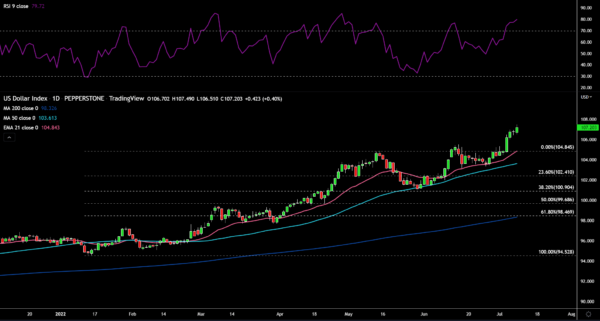
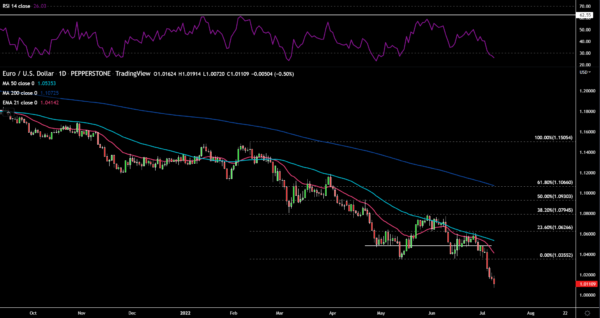
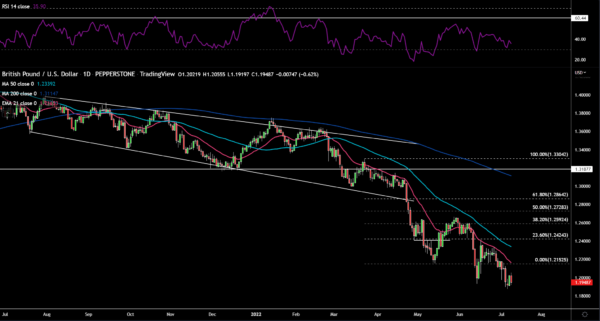
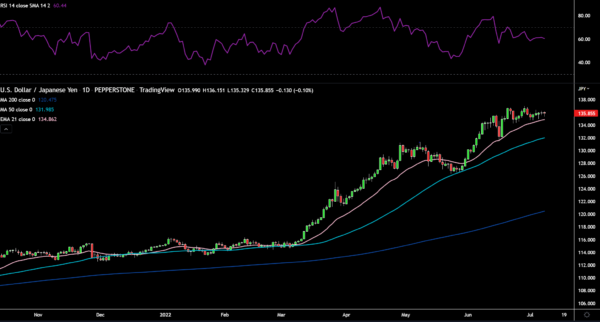
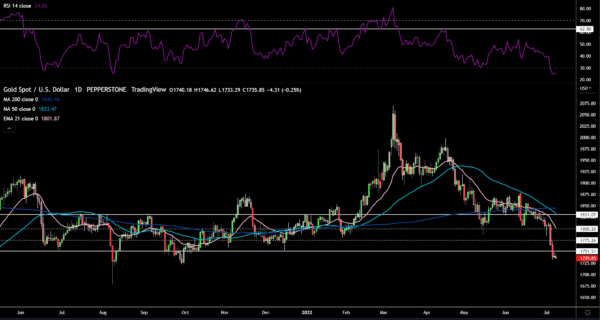
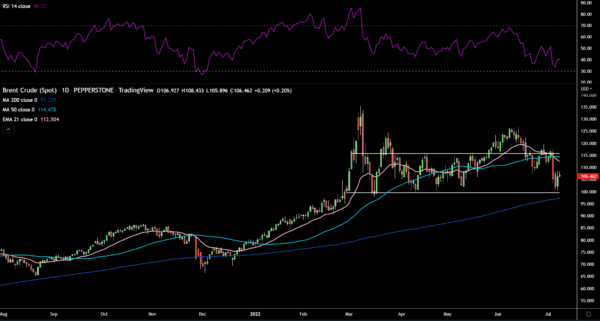
 Signal2forex.com - Best Forex robots and signals
Signal2forex.com - Best Forex robots and signals




